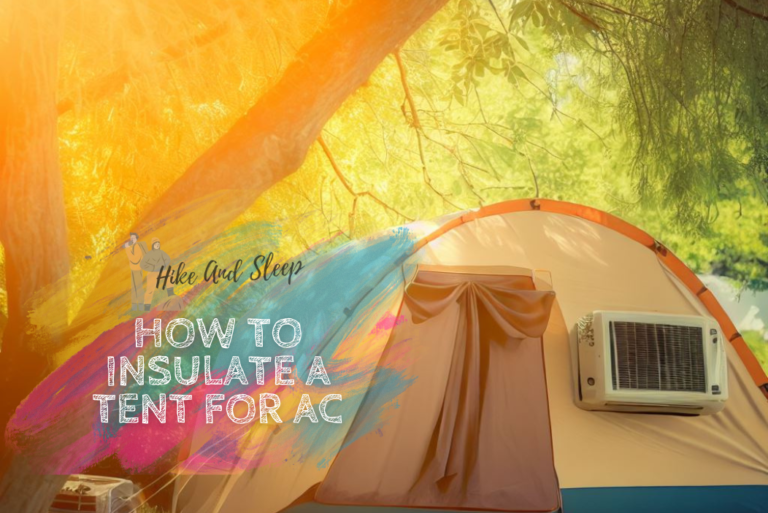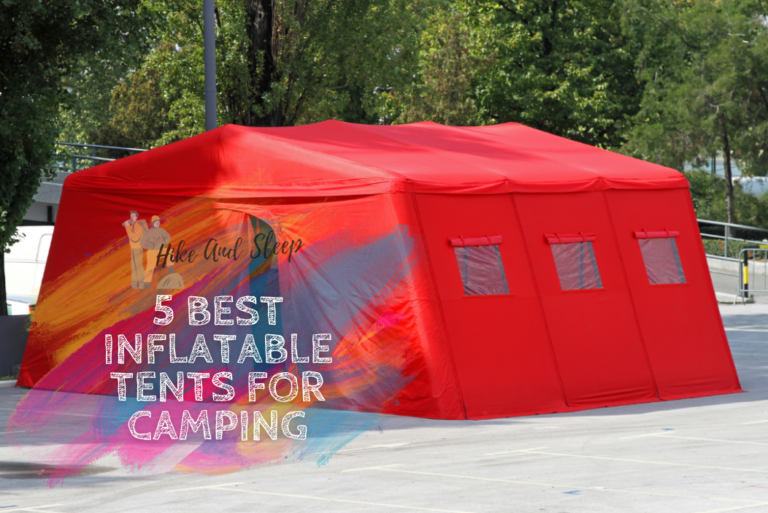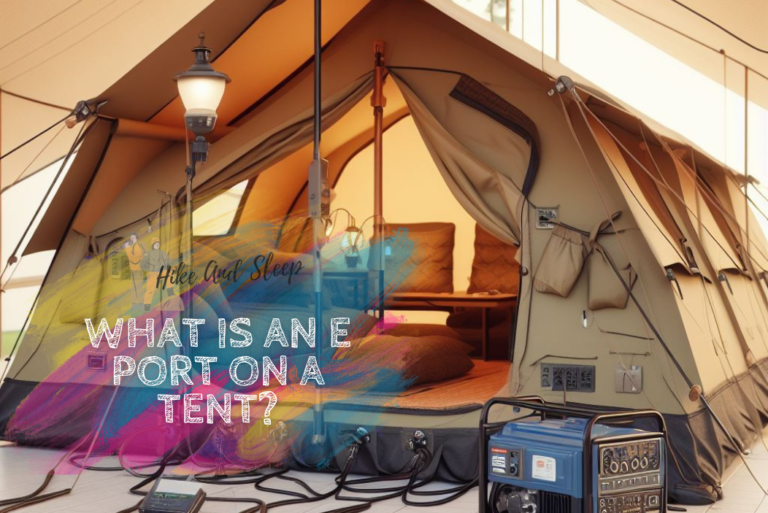How To Winterize a Tent
Imagine camping in winter, surrounded by a snowy wonderland. It’s like being in a fairy tale, but it’s real! However, staying warm and comfy in the cold can be a bit tricky, and that’s where winterizing your camping tent comes in.
Winter camping is a cool adventure (literally!). It’s about going out in the frosty weather and enjoying the beauty of snowy landscapes. But you need to make sure your tent can handle the cold.
In this blog post, we’re going to talk about how to winterize a tent. We’ll keep it simple, from picking the right tent and gear to setting up camp and staying warm. So, get ready for a winter adventure with a comfy tent as your cozy castle!
Table of Contents
Understanding Winter Camping Conditions
The challenges of winter camping
Cold Temperatures: Winter camping means you’re going to feel the chill in your bones. But that’s what makes it exciting, right? It’s crucial to know how cold it can get so you can dress warmly and make your tent a toasty haven. Think layers and cozy sleeping bags!
Snow and Precipitation: Snow is beautiful, but it can also be a bit of a bother. It can pile up on your tent, get inside if you’re not careful, and make things wet. So, knowing how to deal with snow is like mastering a secret skill.
Shorter Daylight Hours: In winter, the sun likes to take it easy and set early. This means you’ll have more nighttime hours. Planning your day and having some good lighting gear is essential. A bright lantern and headlamp are your best friends here.
Choosing the Right Winter Camping Location
Picking the right spot for your winter adventure is like choosing the perfect cake for a celebration. You want it just right! Look for a place that’s not too windy, has good access, and maybe some natural windbreaks like trees or rocks.
Importance of Safety Precautions
Safety first, always! Winter camping can be a bit challenging, so it’s crucial to have safety on your mind. Know about avalanches if you’re in the mountains, carry emergency gear, and have a way to communicate in case of trouble. Being prepared can make all the difference in having a fantastic winter camping trip.

Selecting the Right Tent for Winter Camping
Types of Tents Suitable for Winter Camping
When it comes to winter camping, not all tents are created equal. There are a few types to consider:
Four-Season Tents: These are like the winter warriors of tents. They’re designed for the harshest conditions, with strong materials and sturdy frames. They can handle heavy snow loads and fierce winds.
Three-Season Tents: These are your typical tents for spring, summer, and fall. While they can work in winter, they might not keep you as warm or protect you from heavy snow. But, with some modifications, they can still do the job.
Read Also: Best Inflatable Tents For Camping
Key Features to Look for in a Winter Tent
Durability: Winter can be tough on tents. Look for a tent made with strong materials like ripstop nylon or polyester. Reinforced seams and zippers are a plus.
Insulation: You want a tent that can trap warmth. Look for one with a good rainfly and a full-coverage rainfly can help keep the cold out and the warmth in.
Ventilation: Condensation inside the tent can be a real dampener. Tents with proper ventilation, like mesh windows, help prevent this. You want to stay dry, inside and out!
Tips for Modifying Your Existing Tent for Winter Use
Got a trusty tent that you love? You can winterize it too!
- Add a footprint or ground tarp to insulate from the cold ground.
- Use a thermal blanket on the inside to trap warmth.
- Don’t forget a good-quality sleeping bag and pad to keep you cozy through those frosty nights.
- With a little modification and the right gear, your tent can become your winter sanctuary.
Essential Gear for Winter Camping
1. Insulated Sleeping Gear
When you’re winter camping, your sleeping gear is your warm cocoon. Invest in a high-quality sleeping bag designed for cold temperatures. Look for ones with temperature ratings that suit the coldest nights you expect. Pair it with a cozy sleeping pad to insulate yourself from the chilly ground.
2. Cold-Weather Clothing
Winter camping means bundling up like a snow explorer. Dress in layers to trap warmth. Start with moisture-wicking base layers, add insulating layers like fleece or down, and top it off with a waterproof and windproof outer shell. Don’t forget warm gloves, a beanie, and waterproof boots to keep your extremities snug.
3. Snowshoes and Crampons
Moving around in the snow can be a workout. Snowshoes help distribute your weight and prevent you from sinking deep into the snow. Crampons provide traction on icy surfaces, making your hikes safer.
4. Cooking Equipment
Hot meals and drinks are soul-warming during winter camping. Portable stoves and fuel can keep you cooking even in freezing conditions. Consider insulated mugs and thermoses to keep your beverages warm.
5. Lighting Sources
Winter nights are long, and daylight is scarce. Don’t forget reliable lighting sources, like headlamps and lanterns. LED lights are energy-efficient and work well in the cold.
6. Navigation Tools
Winter landscapes can look quite different under a blanket of snow. Carry a map, compass, or GPS device to stay on course. It’s easy to get disoriented when everything is white.
7. First-Aid Supplies
Accidents can happen, especially in challenging conditions. Make sure your first-aid kit is well-stocked with essentials, including items for treating cold-related injuries like frostbite or hypothermia. Your safety is a top priority during winter camping, so being prepared is key.

Preparing the Tent Site
Choosing a Suitable Campsite
Selecting the right spot for your winter adventure is like finding the perfect spot to build a snow fort. Look for a location that’s sheltered from strong winds but not directly under trees weighed down with snow, as they can shed their load unexpectedly. A flat spot is ideal for pitching your tent, as it makes it easier to set up and prevents water from pooling around your tent.
Clearing Snow and Debris
Before you set up your tent, it’s like giving your campsite a little winter makeover. Clear away any snow and debris from the ground where you plan to pitch your tent. This ensures a flat and clean surface and prevents discomfort while you sleep.
Creating a Windbreak
Winter winds can be fierce, and nobody likes a drafty tent. Use natural features like trees, rocks, or even your vehicle to create a windbreak. It’ll help keep your tent more stable and cozy inside.
Leveling the Ground
Sleeping on a slope is no fun. Use a shovel or your boots to level the ground where your tent will go. This will keep you from rolling into one corner of your tent during the night.
Ensuring Proper Ventilation
Remember, even in the cold, tents need to breathe. Proper ventilation is key to preventing condensation inside your tent. Keep those vents open, and you’ll wake up dry and comfy, not damp and chilly. Prepping your tent site might seem like a lot of work, but it’s like laying the foundation for a cozy winter retreat. With a bit of effort upfront, your winter camping experience will be a lot more enjoyable.
How To Winterize Your Tent
Insulate the Tent
Use of a Ground Tarp: Think of the ground tarp as your tent’s warm, fuzzy socks. Placing an insulating ground tarp under your tent acts as a buffer against the cold ground. It prevents heat loss and provides extra protection from moisture.
Insulating the Tent Body: Just like wearing layers keeps you cozy, insulating your tent is essential. Look for tents with a full-coverage rainfly that shields you from icy winds. Additionally, consider adding a thermal blanket or an extra layer of insulation inside your tent to trap warmth.
Ventilation Is Important
While keeping warm is the goal, you don’t want to feel like you’re in a steam room. Proper ventilation is crucial to avoid condensation inside your tent. Crack open your tent’s vents a bit to allow moisture to escape without letting in the cold air. This way, you stay dry and snug.
Snow Management Around the Tent
Snow can be beautiful but also burdensome when it piles up against your tent. Regularly brush off accumulating snow from your rainfly and sides. This keeps your tent from sagging and becoming weighed down, ensuring it remains sturdy and functional.
Set up a Vestibule or Awning
Adding a vestibule or an awning to your tent is like having a little porch. It provides extra space to store gear, take off snowy boots, and keep your living space tidy. Plus, it creates an extra barrier against the elements.
Reduce Condensation
Condensation can make your tent feel like a rainforest. To minimize it, avoid bringing wet gear inside, keep your tent well-ventilated, and ensure your rainfly is properly tensioned. Waking up in a dry tent makes for a much cozier winter camping experience. With these winterizing steps, your tent will become your warm sanctuary in the snowy wilderness, allowing you to enjoy the magic of winter camping to the fullest.
Sleeping Warm and Comfortably
Choosing the Right Sleeping Bag and Pad
Imagine your sleeping bag and pad as your cozy winter cocoon. When picking a sleeping bag, look for one with a temperature rating suitable for the coldest nights you expect. For extra warmth, consider a mummy-style bag that hugs your body. A good quality sleeping pad is your barrier against the cold ground. Opt for one with insulation to prevent heat loss.
Layering for Warmth
Layering isn’t just for fashion; it’s a winter camping essential. Wear moisture-wicking base layers to keep sweat away from your skin. Add insulating layers like fleece or down, and finish with a waterproof outer layer. Remember, it’s easier to remove layers if you get too warm than to add more if you’re chilly.
Recommended Read: How to build a tent Pad
Hot Water Bottle Trick
Here’s a neat trick: Fill a hot water bottle and toss it into your sleeping bag before bedtime. It radiates heat and keeps your toes toasty. Just make sure the cap is tight, so you don’t wake up in a puddle!
Proper Sleeping Bag Care
Taking care of your sleeping bag is like maintaining your winter gear. Follow the care instructions carefully, avoid storing it compressed for too long, and use a liner to keep it clean. A well-cared-for sleeping bag stays warm and comfy for many winters to come.
With the right sleeping gear and a few tricks up your sleeve, you’ll be snoozing like a winter pro in your cozy tent. A warm and comfortable night’s sleep is the key to enjoying your winter camping adventure to the fullest!
Staying Safe in Winter Conditions
Avalanche Awareness
When you’re out in the snowy wilderness, understanding avalanches is like knowing the terrain of your adventure. Check avalanche forecasts before heading out, and if you’re in avalanche-prone areas, consider taking an avalanche safety course. Always carry avalanche safety gear, including a beacon, shovel, and probe, and know how to use them in case of an emergency.
Cold-Weather Injuries and Prevention
Winter camping can be a bit of a cold-weather challenge. To stay safe, keep an eye out for cold-weather injuries like frostbite and hypothermia. Dress warmly, stay dry, and stay active to keep your body temperature up. Carry extra warm clothing and emergency blankets just in case.
Emergency Communication Devices
In the wilderness, you might be far from cell phone towers. That’s where emergency communication devices come in handy. Consider bringing a satellite phone or a personal locator beacon (PLB) so you can call for help if needed. It’s like having a lifeline in your pocket.
Conclusion
How to Winterize a Tent? There you have it, intrepid winter campers! We’ve covered the whole snowy spectrum of how to winterize your tent and enjoy the frosty outdoors while staying snug as a bug.
Remember, winter camping might seem a bit daunting, but with the right knowledge and gear, it’s an adventure worth undertaking. From choosing the perfect tent and setting up camp like a pro to sleeping warmly and staying safe, you’re now equipped to conquer the winter wonderland.
So, bundle up, pack your gear, and head out into the pristine landscapes. Embrace the peacefulness of snowy woods, the glittering stars on crisp nights, and the sense of accomplishment that comes with mastering the art of winter camping.
Just keep in mind: that safety always comes first. Be aware of the winter conditions, keep your gear in tip-top shape, and let someone know your plans in case of any unexpected situations.
Now, go out there and make some unforgettable winter camping memories! The cold can’t stop you when you’re armed with knowledge and enthusiasm. Happy camping!







